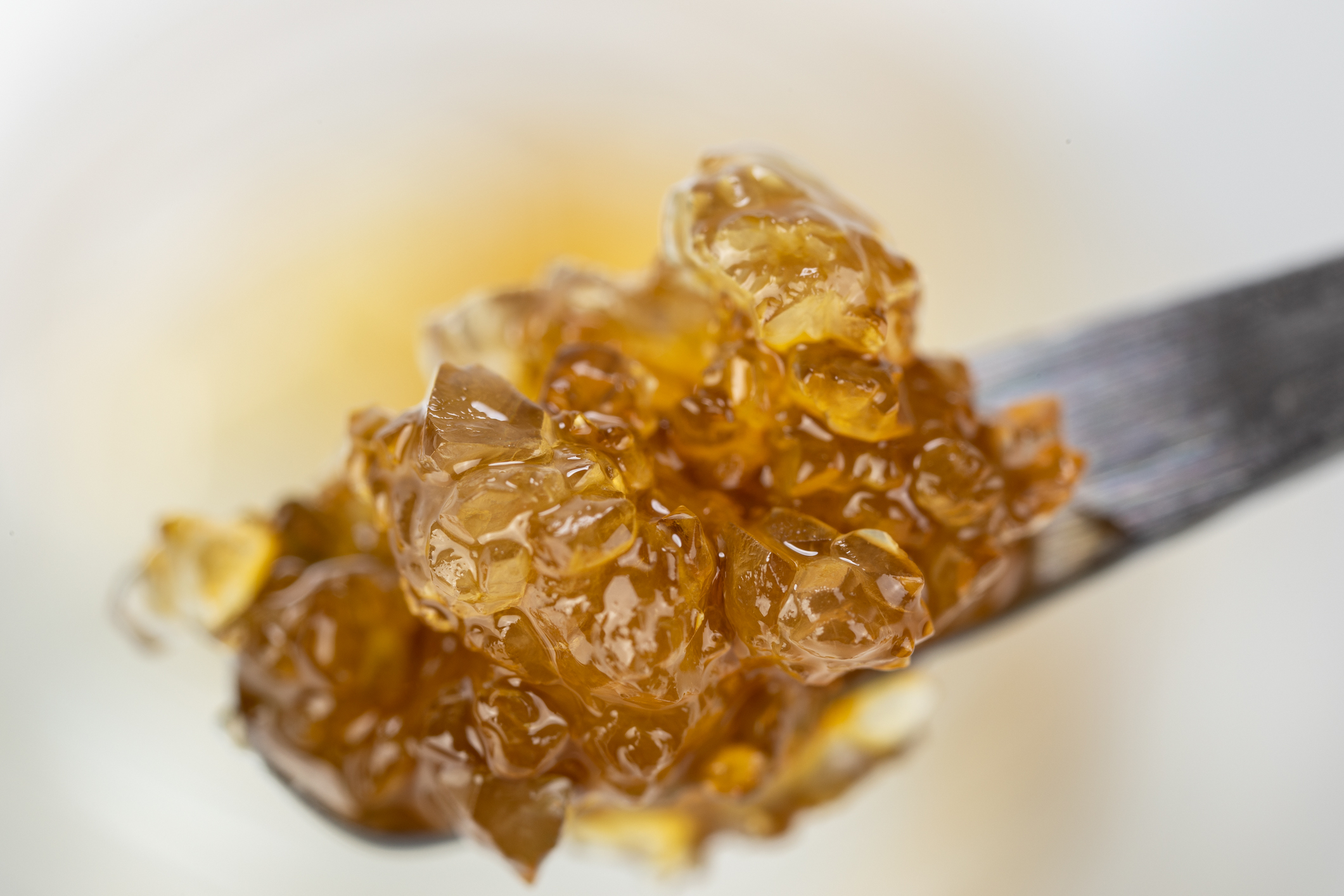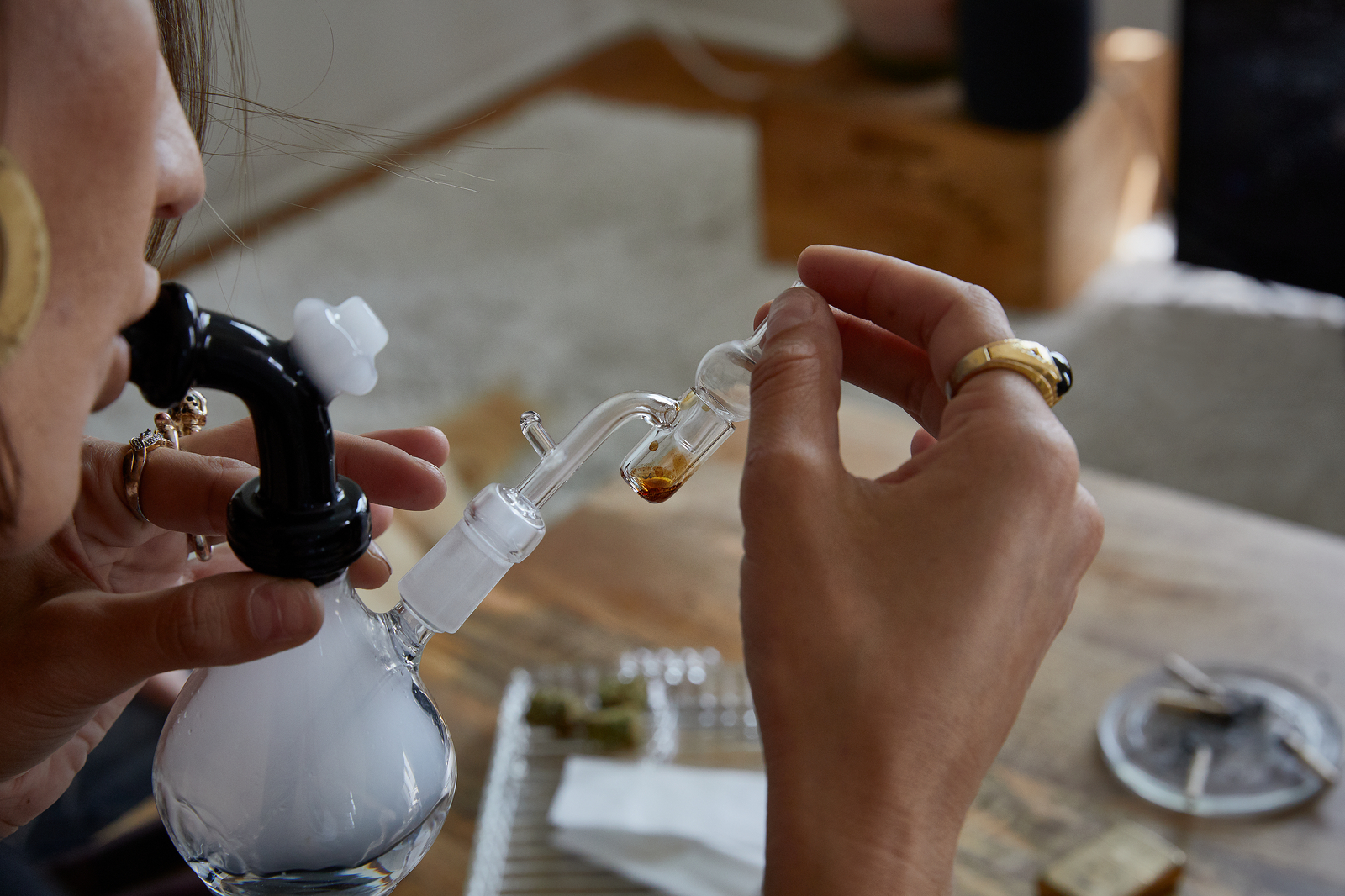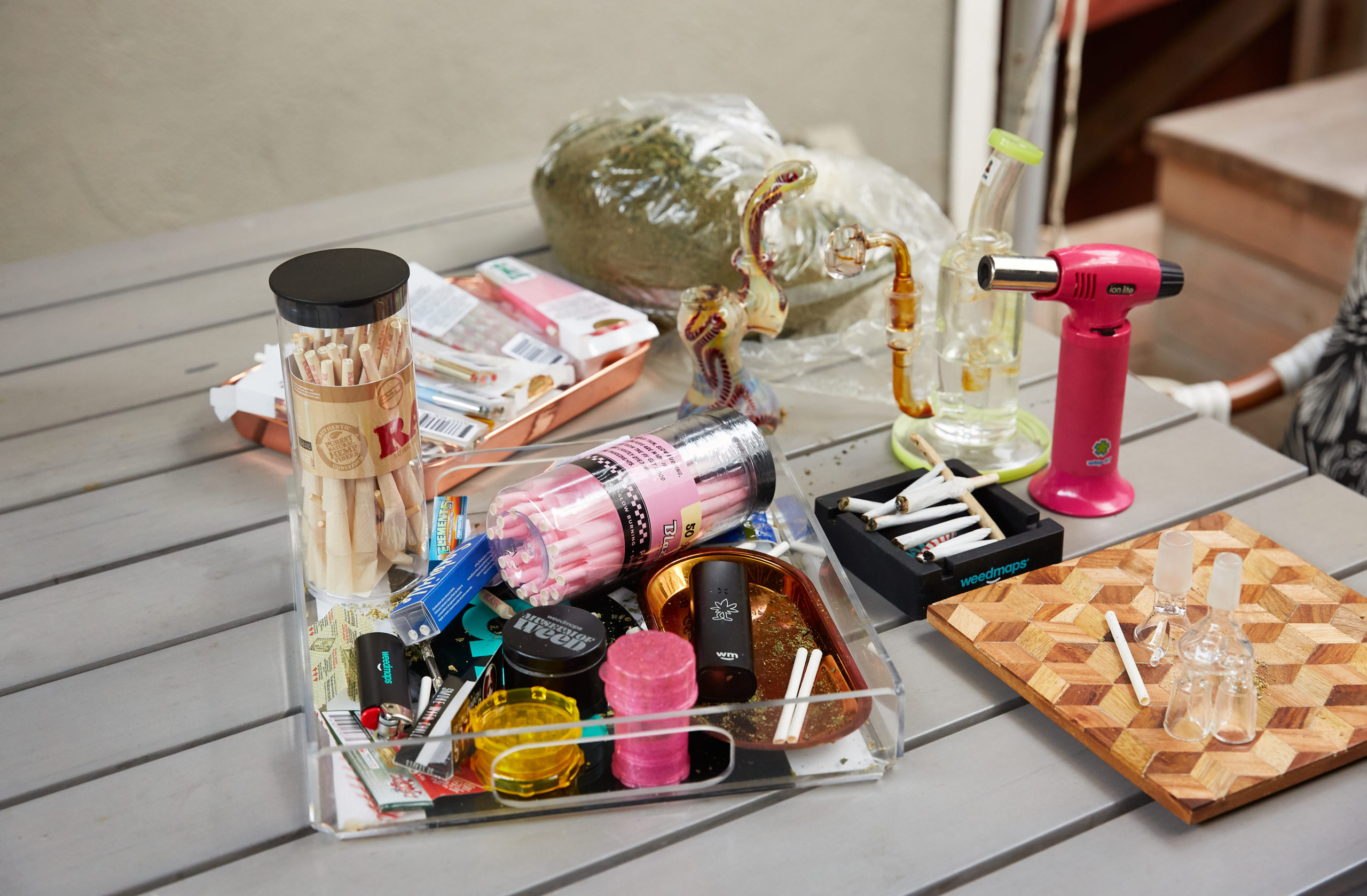A cannabis concentrate is a highly potent product extracted from the plant, containing cannabinoids, such as THC and CBD, and aromatic terpenes.
Cannabis concentrates are potent extracts made by isolating the most flavorful and psychoactive parts of the plant: the trichomes. These resin-rich structures hold cannabinoids like THC and CBD, as well as terpenes, the compounds responsible for aroma.
Cannabis concentrates are generally much more potent and pure than traditional flower, so consumers often choose them for their intensity, efficiency, potency, purity, and flavor. The more terpenes that extractors are able to preserve while processing the plants, the more connoisseurs will value the extracts for their strong flavor and aroma profiles.
Types of concentrates
Cannabis concentrates have evolved significantly over the years. They originated with traditional methods like charas and dry sift, handmade concentrates that have been crafted for centuries in regions like South Asia and the Middle East. These ancestral techniques paved the way for innovations like ice water hash (or bubble hash), which introduced more refined mechanical separation. As the demand for potency, purity, and efficiency grew in the 2000s, solvent-based extraction methods became increasingly popular, offering high THC concentrates like shatter and live resin.
More recently, the industry has embraced both modern solvent-based extracts and solventless methods, catering to a growing market focused on flavor, purity, and clean processing.
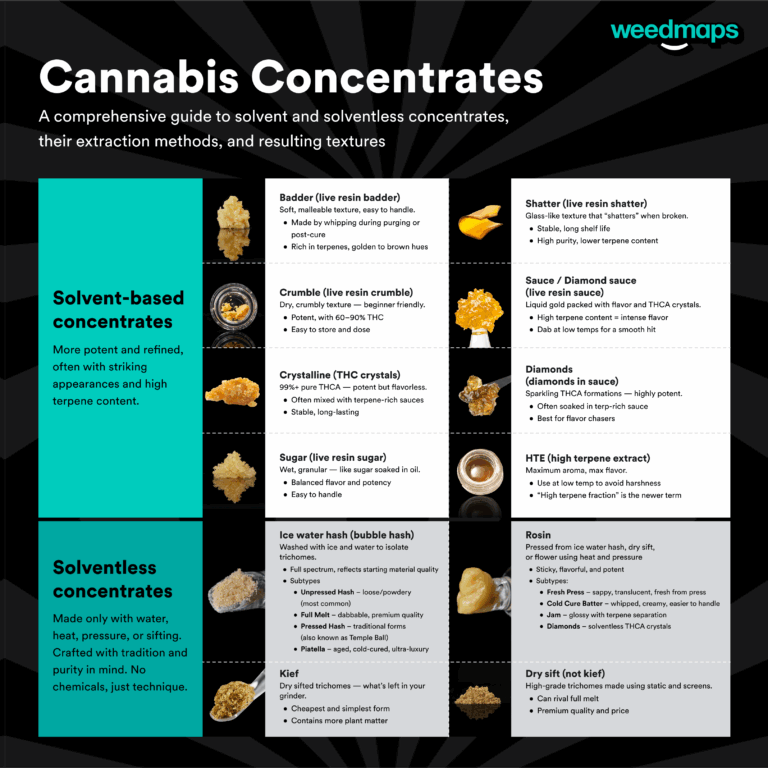
Image lightbox

Solvent-based concentrates (or extracts) are made using a chemical solvent, like butane, propane, ethanol, or CO2.
Solvent-based concentrates include:
- Live resin
- Badder (sometimes called budder or batter)
- Shatter
- Crumble
- Sauce
- Crystalline
- Diamonds in sauce
- Sugar
- High terpene extracts (HTE)
Solventless concentrates are made using physical extraction, heat, pressure, ice, agitation, or water (the water does not behave as a solvent — it only carries intact trichome heads).
Solventless concentrates include:
- Ice water hash (aka bubble hash)
- Temple balls (aka pressed hash)
- Piatella
- Unpressed hash (the loose, powdery form)
- Full melt hash (premium dabable grade)
- Rosin
- Kief (crushed plant particles mixed with trichomes — in other words, the stuff you find at the bottom of your grinder)
- Dry sift (mix of loose trichome heads and pressed hash — made through refined mechanical separation)
Hash
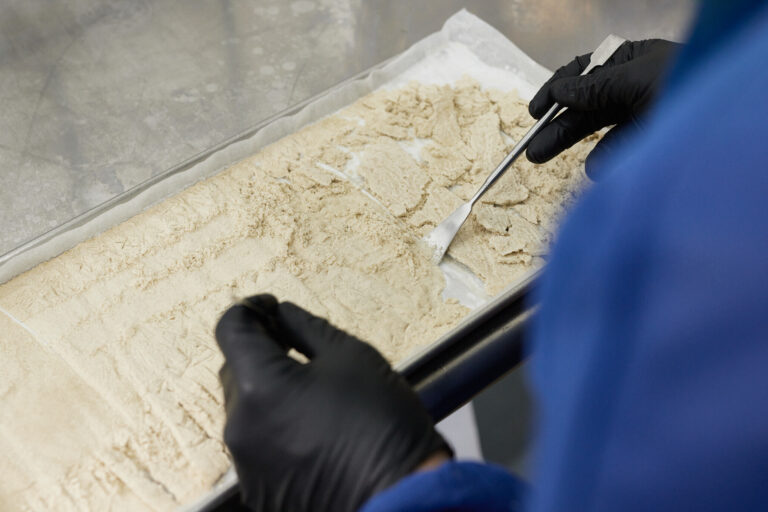
Image lightbox

What does "hash" mean?
The word hash is short for hashish, which comes from the Arabic word ḥašīš, meaning "grass" or "herb." Hashish has been used for centuries, originating in the Middle East and Central Asia, where cannabis resin was collected and pressed into bricks for smoking or ingestion. Today, "hash" is often used as a catch-all term for solventless cannabis concentrates (solvent-based concentrates are not considered hash).
The hash grading scale
Ice water hash and dry sift can be evaluated using an industry-sanctioned melt scale, which ranks its quality based on how cleanly it melts when heated. The higher the star rating, the purer and more potent the hash, and the more prized it is by connoisseurs.
1-star: The lowest quality on the hash grading scale, 1-star hash does not melt and contains a high amount of impurities, like plant matter, dust, and other unwanted particles. This grade is typically the result of poor processing or starting material. If consumed, 1-star hash is usually only suited for edibles, not smoking or dabbing.
2-star: What makes 2-star hash a step up from the 1-star base level is its higher oil content. It still contains visible impurities and plant material, but it's not clean enough to really melt and is also best as an addition to traditional smoking methods.
3-star: 3-star hash is considered average grade. It contains a moderate amount of oil but still leaves behind a considerable amount of resin. While it doesn't fully vaporize like higher-grade hash, it's a solid choice for topping bowls or rolling into joints without having to wonder too much if there are any unwanted extras. Hash flavors and aromas begin to display nuance.
4-star: The lowest grade hash that's dab-worthy quality, 4-star hash is more refined than 1-, 2-, and 3-star hash, with fewer impurities and a higher concentration of trichomes. While it can be dabbed, it's most commonly used as starting material for pressing into rosin due to its solid resin content and cleanliness.
5-star: High-quality and nearly full-melt, 5-star hash can be dabbed directly, though it's still often pressed into rosin. It melts well on a quartz banger, leaving only a slight ring of residue, showcasing minimal trace impurities.
6-star: The highest grade available, 6-star hash — also known as full melt — is exceptionally pure and melts completely like rosin. It's best enjoyed as-is, with no need for pressing. Known for its clean burn and rich flavor, full melt is the ideal hash for dabbing.
How cannabis concentrates are made
Input materials
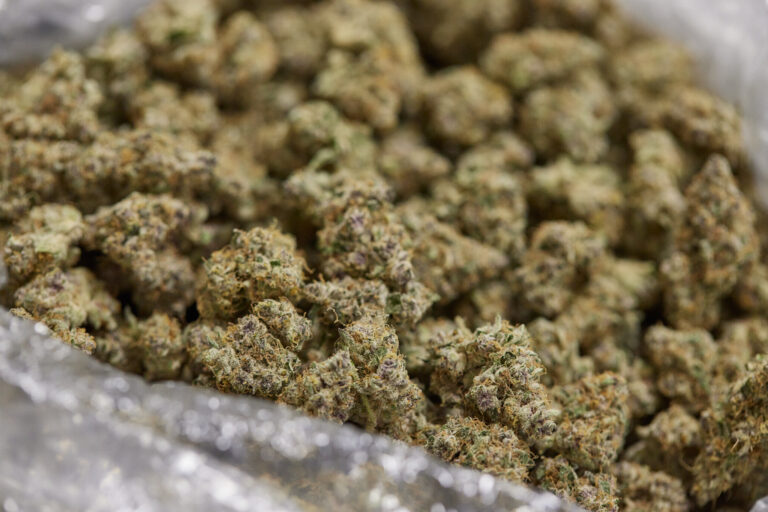
Image lightbox

Cannabis concentrates are made from the parts of the plant that contain trichomes, including buds and sugar leaves (never stems or leaves). These are called input materials.
The strain of the input material determines the cannabinoid and terpene profile of the final concentrate product, which ultimately determines the concentrate's effects, potency, flavor, and aroma.
Input materials can be in the form of buds or trim, and each can be either dried and cured or fresh-frozen, meaning the plant is freshly harvested and frozen in small buds to maintain the terpene profile.
The type of input material used will influence the quality and, thus, the price of the concentrate.
For example, concentrates made using fresh or flash-frozen flower as the input material are typically more expensive because the plant undergoes a freezing process, which preserves volatile terpenes, resulting in a more flavorful and potent end product.
Extraction methods
Solvent-based concentrates are made using chemical solvents, such as butane, propane, ethanol, or CO2, to isolate cannabinoids and other compounds from the plant. The solvents dissolve the cannabinoids and terpenes, which are then refined, filtered, and purged of the solvent, resulting in the concentrates.
Solventless concentrates are made using physical extraction, heat, pressure, ice water, or agitation. These natural methods separate trichomes from the plant material, resulting in solventless concentrates.
How to consume cannabis concentrates
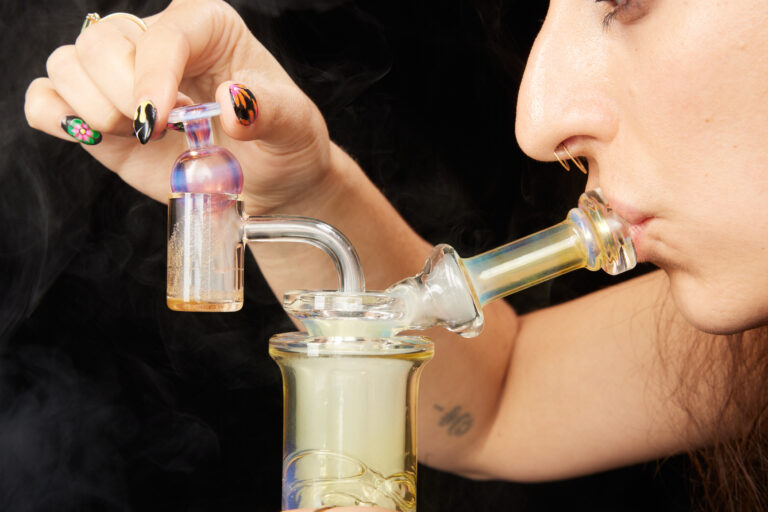
Image lightbox

One method for consuming concentrates is dabbing. Dabbing is the process of heating and inhaling vaporized cannabis extracts using a dab rig. When you take a hit from a dab rig, it's usually referred to as a “dab.”
If you prefer not to dab concentrates, there are other ways you can consume them.
For a super simple method, you can add some concentrates to joints, blunts, or homemade edibles.
For a quick dab, there are electronic vaporizers with varying features, and for a more controlled dab experience, vaporizers like the PuffCo offer high-tech solutions.
You can also vape concentrates using pre-filled vape pens and concentrate vaporizers.
Pro tip: If you're using concentrates in homemade edibles, you'll need to decarboxylate (or heat) them in the oven first (240°F for about 30 minutes) before mixing them in with the other ingredients. This step activates the THC — if you don't do it, your edibles won't get you as high.
New to dabbing? Here's how to use a dab rig:
- Heat the nail
- Use a blowtorch to heat the nail until it's red-hot (you'll let the nail cool to the correct dabbing temp in step 2)
- If you're using an e-nail, set the temperature manually (lower temps are better)
- Let it cool (if using a torch)
- Different concentrates are better at different temps, so depending on the concentrate you're dabbing, allow the nail to cool for 30 to 90 seconds to reach the ideal dabbing temperature:
- Low temp (450°F-520°F): Preserves terpenes and flavor and is gentler on the lungs (ideal for high-terpene products)
- Medium temp (550°F-650°F): Offers a balanced experience
- High temp (650°F+): More intense effects but can degrade terpenes and create harsher experiences
- Load your dab
- Use a dab tool to scoop a small amount of concentrate (aka a dab) — keep in mind that concentrates are very potent, so be conservative
- Touch the dab to the inside of the hot nail and gently twist the tool while simultaneously inhaling through the dab rig's mouthpiece
- Cap it (optional but recommended)
- Place a carb cap over the nail to trap heat and vapor
- Continue inhaling steadily
- Clear the rig
- When you're ready, remove the carb cap and inhale deeply — remember, you can always take a mid-hit break, so don't feel obligated to clear the chamber if your lungs feel tight
- Exhale
- Breathe out slowly and enjoy the effects
Concentrate storage and safety
To preserve your concentrates and prevent terpene loss, store them in an airtight container in a cool, dark, dry place.
For short-term storage, you can put some of your concentrates in the refrigerator — just check the packaging to see if refrigeration is okay. For those that can be placed in the refrigerator, be sure the containers are sealed tightly and properly to keep out any moisture or air, which can lead to mold and terpene degradation.
If you need to store your concentrates long term, you can freeze them, but keep a few things in mind:
- Vacuum seal for long-term storage: This reduces oxygen exposure and preserves flavor and potency
- Don't freeze and thaw repeatedly: Each cycle can degrade potency and texture
- Freeze fast: The quicker your concentrates freeze, the better they'll be preserved
- Avoid storing near food: Concentrates can absorb odors, so dedicate a clean, odor-free space in your freezer if possible
- Thaw gradually: Transfer your concentrates to the refrigerator for a few hours first, then let them sit at room temperature in their original containers to prevent condensation and contamination
Concentrate blends and beyond
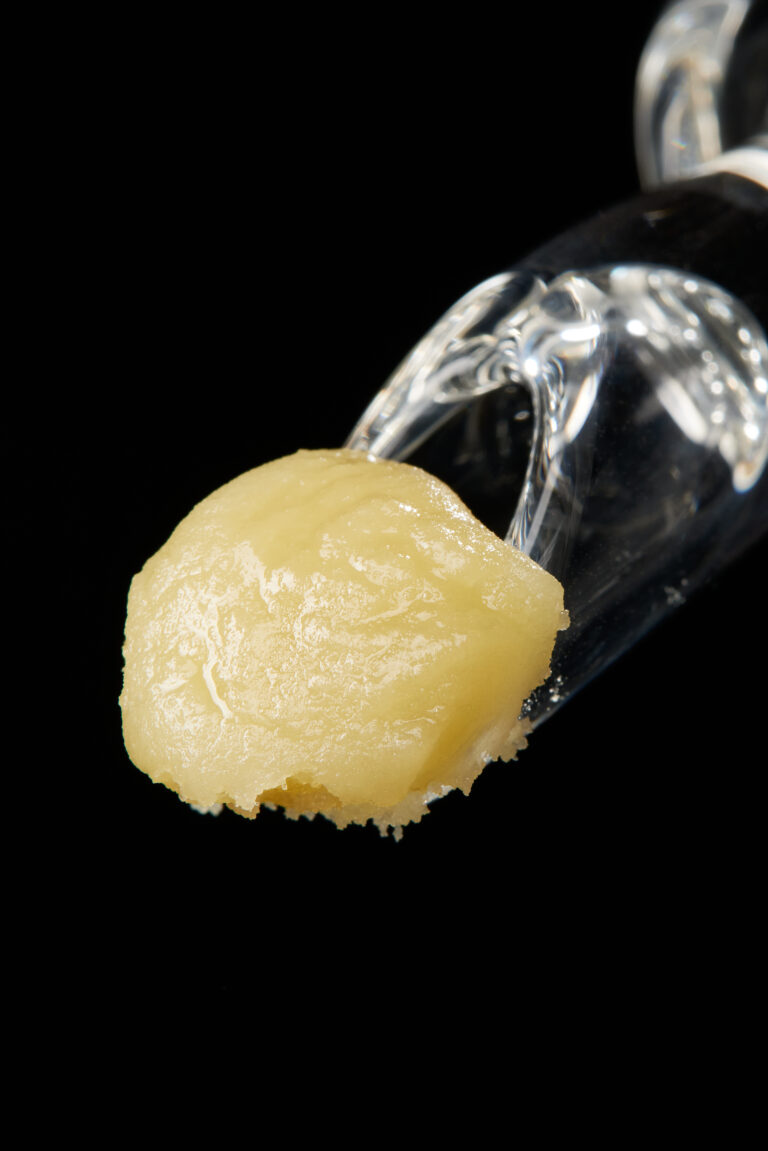
Image lightbox

The cannabis concentrate market is evolving every day with innovative products that offer unique textures, flavors, and experiences. Emerging cannabis concentrate blends like thumbprints, geodes, and rosin combinations are gaining traction for their artisanal appeal, high potency, and flavor complexity.
Thumbprints combine different textures of rosin — usually cold-cured rosin and rosin jam — into a single product. The result is a solventless concentrate with a visually striking, swirling "thumbprint" pattern, offering a mix of flavors and effects.
Geodes are similar to thumbprints but often feature a rosin jam center surrounded by cold-cured rosin, resembling a geode rock formation. This combination allows for a layered experience of flavors and potency.
Hybrid rosin blends, otherwise known as layered or mixed rosins, combine different strains, textures, and terpene profiles into a single concentrate, resulting in products that yield balanced highs and more diverse terpene profiles than single-strain extracts.

